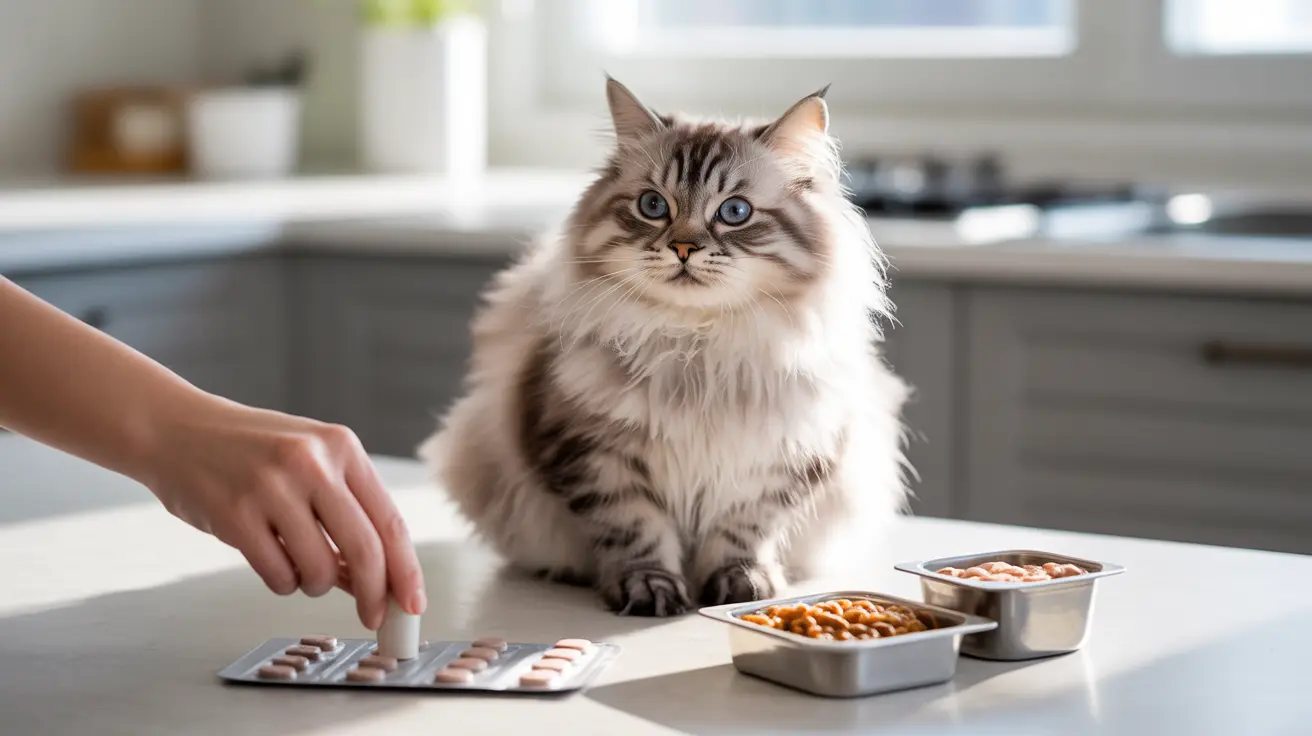Administering medication to a cat can feel like an Olympic-level challenge for many pet owners. Whether you're a first-time cat parent or a seasoned caregiver, knowing how to get a cat to take a pill effectively is crucial for maintaining your feline friend's health. This comprehensive guide will walk you through proven techniques, expert tips, and safety considerations to make the process smoother for both you and your cat.
Understanding the right approach and having a solid strategy can transform this potentially stressful experience into a manageable task. Let's explore the most effective methods to ensure your cat receives their necessary medication while maintaining trust and minimizing stress.
Preparing for Success: Essential Steps Before Giving Pills
Before attempting to give your cat a pill, proper preparation is crucial. Gather all necessary supplies, including the medication, treats or pill pockets if using them, and a clean surface for administration. Choose a quiet room where your cat feels comfortable and secure.
Position yourself in a way that gives you good control without making your cat feel trapped. The ideal setup involves having your cat on a non-slip surface at a comfortable height, with all supplies within easy reach.
Effective Methods for Pill Administration
The Food Method
One of the gentlest approaches is hiding the pill in food. Use small amounts of highly appealing treats like wet food, tuna, or commercial pill pockets. The key is to offer a tiny portion with the pill to ensure complete consumption.
Start by giving your cat a small taste of the treat without medication, then offer the portion containing the pill, followed by another clean treat. This "sandwich" method can increase success rates significantly.
Direct Administration Technique
When food methods aren't effective, direct administration may be necessary. Hold your cat securely but gently, approaching from behind or the side. Tilt their head back slightly, use your thumb and middle finger to open their mouth, and place the pill as far back on the tongue as possible.
Immediately close their mouth and gently stroke their throat to encourage swallowing. A small amount of water or wet food afterward can help ensure the pill moves down properly.
Tools and Aids for Easier Pill Administration
Several tools can make giving pills to cats easier and safer. Pill poppers or pill guns allow you to place medication deeper in the mouth while keeping your fingers safe. Gel caps can help pills slide down more easily, and specially designed treats with built-in pockets can hide medications effectively.
Creating Positive Associations
Turn medication time into a more positive experience by incorporating rewards and praise. Consider these strategies:
- Offer favorite treats before and after successful pill administration
- Use gentle petting and calm praise throughout the process
- Keep sessions short and end on a positive note
- Maintain a consistent routine to help your cat know what to expect
Frequently Asked Questions
How can I get my cat to take a pill without stressing them out?
Approach the task calmly and confidently, using positive reinforcement. Choose a quiet time and location, and consider hiding the pill in appealing food or treats. If your cat becomes stressed, take a break and try again later.
What are the best ways to hide pills in cat food effectively?
Use small amounts of strongly flavored wet food, commercial pill pockets, or sticky treats like cheese or butter (if approved by your vet). Ensure the pill is completely covered and offer the treated food when your cat is hungry.
How do I use a pill popper to give medication to my cat safely?
Load the pill into the popper, gently open your cat's mouth, and place the tip behind the canine teeth. Quickly but smoothly depress the plunger to release the pill toward the back of the tongue, then close their mouth and stroke their throat.
Can I crush all types of cat medications and mix them with food?
No, not all medications can be crushed. Some pills have special coatings or time-release properties that would be compromised by crushing. Always consult your veterinarian before altering any medication.
Are there any alternative forms of medication for cats that avoid pill administration altogether?
Yes, alternatives may include liquid medications, transdermal gels, long-acting injections, or flavored compounds. Discuss these options with your veterinarian if pill administration proves consistently difficult.
Remember, patience and persistence are key when medicating your cat. If you continue to have difficulties, don't hesitate to consult your veterinarian for additional guidance or alternative medication options. With practice and the right approach, you can master the art of giving pills to your cat while maintaining a positive relationship.






